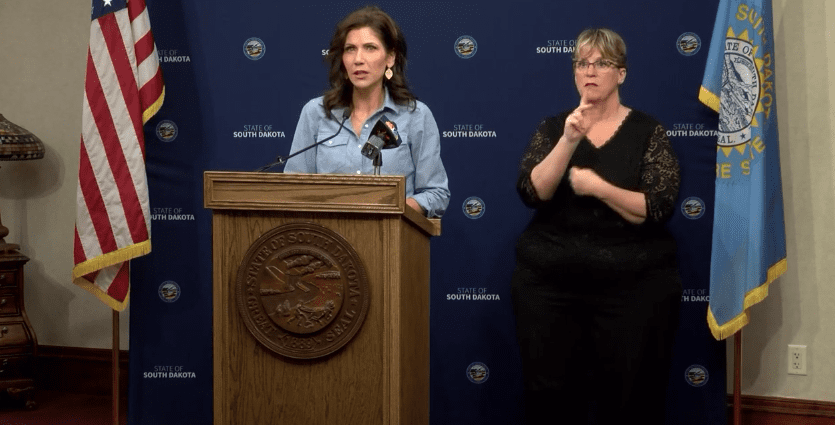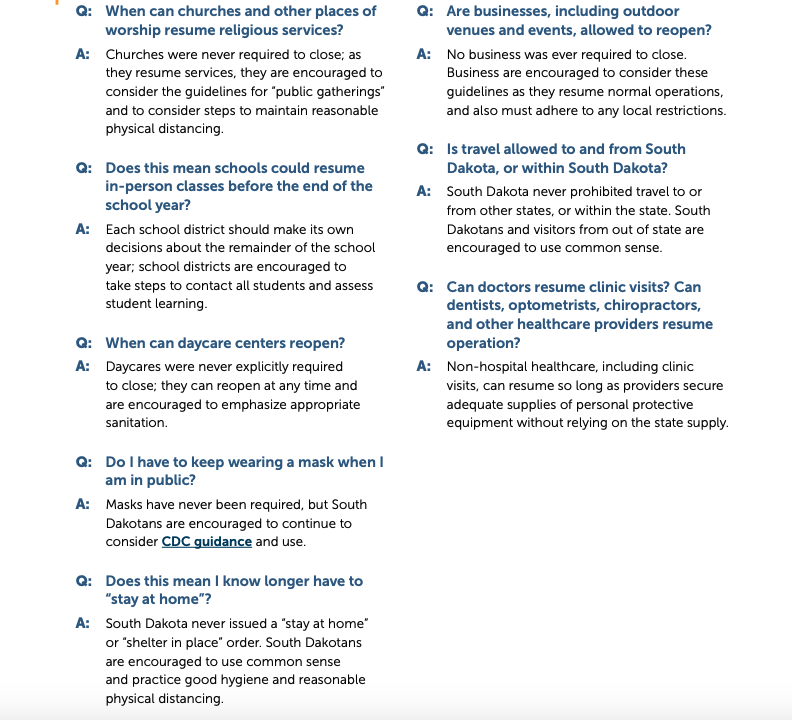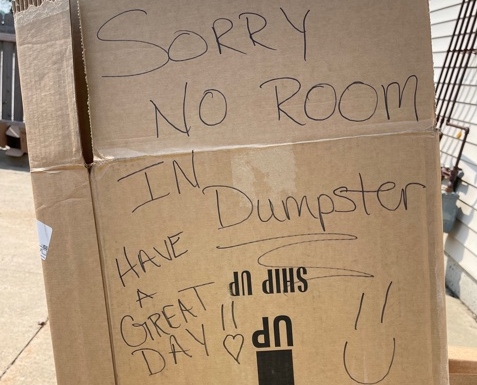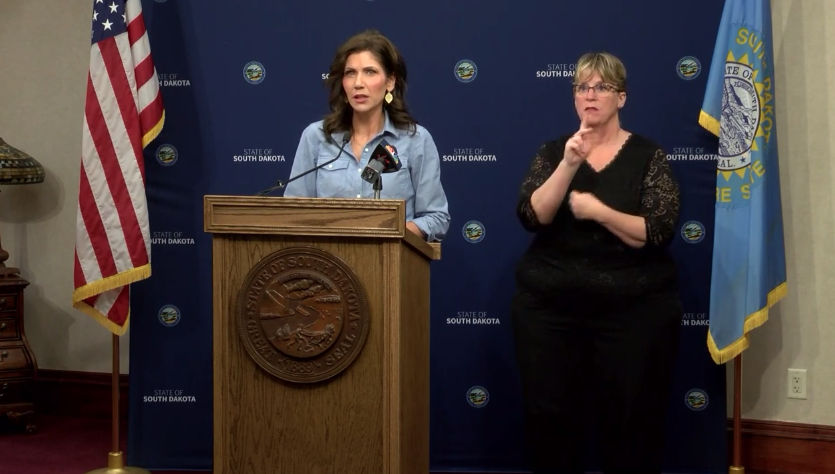Noem details ‘back to normal’ plan
April 28, 2020
South Dakota’s “back to normal” plan suggests residents and businesses continue practices to mitigate the spread of COVID-19 but largely opens the door for business operations to resume.
The state will put “the power of the decision-making in the hands of the people where it belongs,” Gov. Kristi Noem said.
“They need to take their responsibility for personal health and safety seriously,” she said. “Overall, the people of South Dakota have done a tremendous job.”
South Dakota’s initial case was reported March 10. The state cut its projected peak by more than 75 percent and hospital capacity now “greatly exceeds” the projected need, Noem said.
According to the plan, it would be implemented after a downward trajectory of documented cases within a 14-day period in areas with sustained community spread and no clusters that pose a risk to the public.
Noem’s executive order that requires those 65 and older and vulnerable individuals in Minnehaha and Lincoln counties to shelter in place remains in effect until May 11.
Individuals
- Continue to practice good hygiene.
- Continue to stay home when sick.
- Continue to practice physical distancing, as appropriate.
Vulnerable individuals are at higher risk for this virus
Accordingly, they should:
- Take extra care to practice good hygiene.
- Avoid those who are sick or those who have been exposed to people who are sick.
- Consider staying home whenever possible.
Employers
- Encourage good hygiene and sanitation practices, especially in high-traffic areas.
- Encourage employees to stay home when sick.
- If previously operating via telework, begin transitioning employees back to the workplace.
- Where appropriate, screen employees for symptoms prior to entering the workplace.
Enclosed retail businesses that promote public gatherings
- Resume operations in a manner that allows for reasonable physical distancing, good hygiene and appropriate sanitation.
- Consider restricting occupancy and continue innovating in this uncertain environment.
Schools
- Continue remote learning.
- Consider a limited return to in-person instruction to “check in” before school year ends.
- Encourage good hygiene and sanitation practices, especially in high-traffic areas.
Health care providers
- Hospitals treating COVID-19 patients should reserve 30 percent of their hospital beds and maintain appropriate stores of PPE to meet surge demand.
- Other hospitals and surgery centers must have updated transfer protocols and adequate stores of independently sourced PPE.
- Non-hospital health care can resume with adequate stores of independently sourced PPE.
- Continue to restrict visits to senior care facilities and hospitals.
Local governments
- Consider current and future actions in light of these guidelines.
The state now projects a peak need for 2,200 hospital beds sometime in June, state epidemiologist Josh Clayton said. Hospital stays are averaging six days instead of seven, which is contributing to the need for fewer beds. Six hundred ventilators would be needed at the peak instead of 1,300 in the previous projection.
The state plans to continue testing people when symptomatic so they can be isolated and their contacts and be notified, Health Secretary Kim Malsam-Rysdon said.
“This is not walk-in testing just because you want it,” she said. “We want to make sure people can get testing if they have symptoms without charge. We don’t want that to be a barrier and the federal government has several options.”
The state can do up to 3,000 tests per day, which exceeds demand, she said. The plan is to increase to 5,000 per day, “which will meet the need going forward.”
The testing plan will keep evolving, she said.
“It will especially evolve as we have more resources for antibody testing.”
The state envisions a three-tiered testing strategy using public and clinical labs, smaller facilities and potentially mass testing events.
Those are geared toward groups of vulnerable populations or hot spots and can include mobile testing, she said.
More testing will reveal more positive cases, Noem said.
“Don’t be surprised,” she said, adding the state has not seen its peak hospitalization rate yet.
Here’s a look at some frequently asked questions provided by the state:









